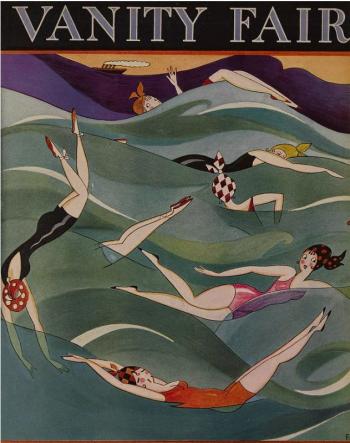Vanity Fair
This world-famous magazine began life as a British publication in 1868. It was founded by Thomas Gibson Bowles (1842–1922) and became known for its satirical portraiture and social commentary, which at times angered the people mentioned. The title Vanity Fair was taken from both John Bunyan's Pilgrim's Progress and William Makepeace Thackeray's novel of the same name, both of which depict a world that is cursory and shallow and abounds with excess. The British version of the magazine folded after financial troubles, but not before an American version was acquired by Condé Nast in 1913. It ran for twenty-three years and became the 'must-read' during the Jazz Age. Photographs and portraits of celebrities included Man Ray and Cecil Beaton. Its closure in 1936 was due largely to the Great American Depression, and the magazine was eventually swallowed up by Vogue.
The Victoria & Albert Museum holds a significant collection related to Vanity Fair. It includes posters and other promotional materials depicting the magazine's covers and content, which can be explored in their online collection. The latest American incarnation of Vanity Fair began in 1983 when it was revived by Condé Nast. It now focuses on celebrity society, scandal and politics.
Artists whose work has appeared in the British version of the magazine include Max Beerbohm, Sefton Fish, Forbes-Robertson, Harry Furniss, George Belcher and Leslie Ward (Spy).
Get Unlimited Access from just £5


